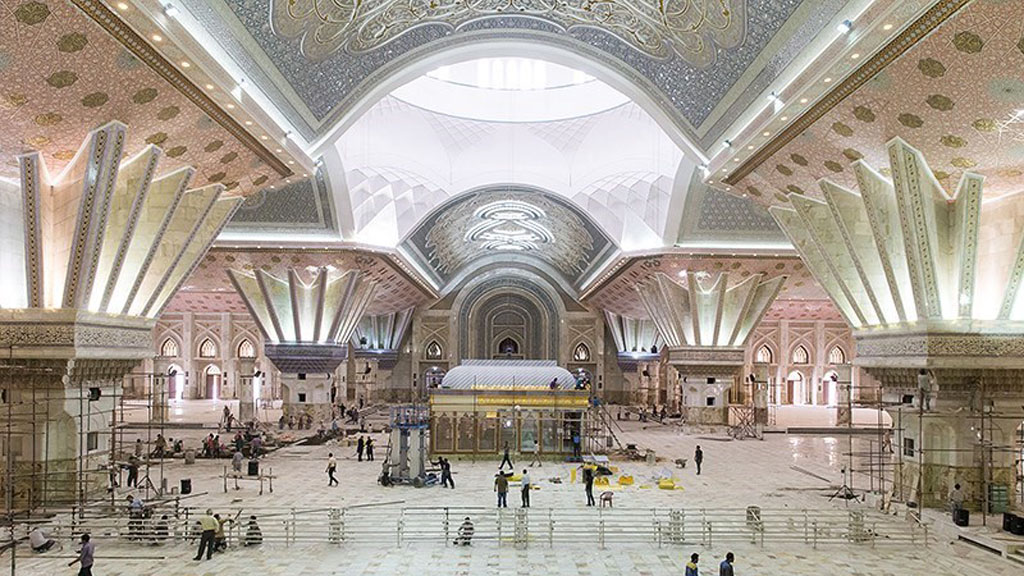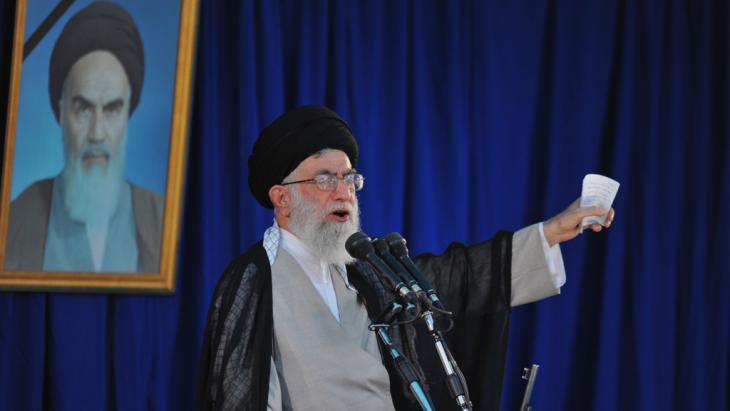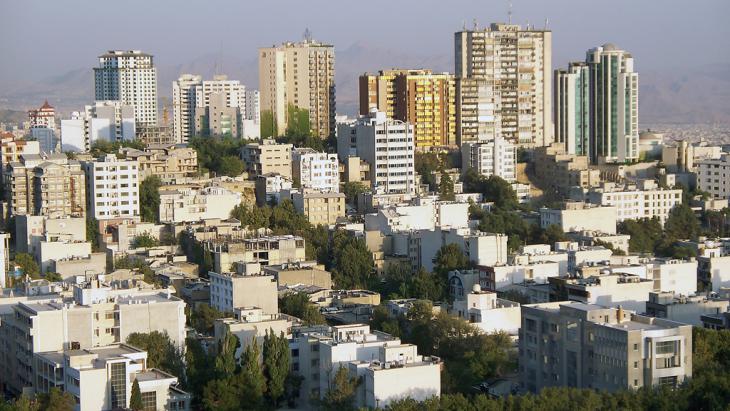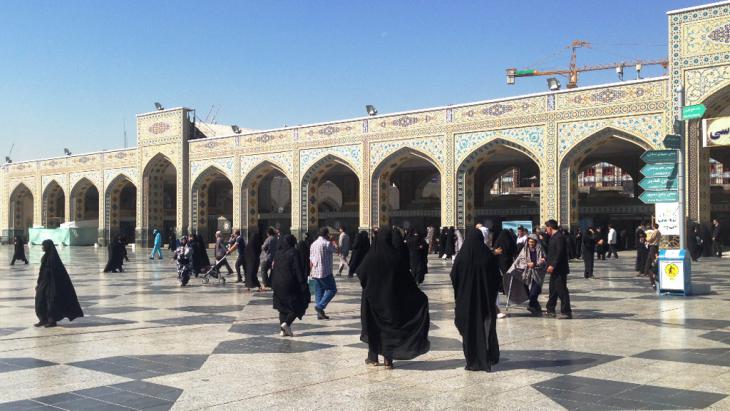Far from an Islamist Utopia

Warnings of a "cultural invasion" have been one of the fundamental features of public discourse in Iran since the Islamic Revolution in 1979. The ruling Islamists see aesthetics as no less dangerous than conventional politics, writes the Iranian- American political analyst Mehdi Khalaji. Their fear, he says, is that "Western cultural colonisers are trying to destroy the cultural 'authenticity' of Muslims and deprive [the Muslim world] of its 'originality'". This explains why the fight against the cultural influence of the West is being conducted with such vigour – though admittedly with only limited success.
Revolutionary leader Ayatollah Ali Khamenei issued another warning about cultural infiltration of the country only recently. That "global arrogance", the United States, has "certain plans for nations" Khamenei warned last May, at a meeting with teachers. The imperialists, he said, want to educate young Iranians according to their own cultural values, so that they will later act as agents to further the West's own interests. This "colonialist, cultural plan" has been pursued for decades already, he added.
The "cultural invasion" via the Internet, TV and other media is no less dangerous than the West's military power, Khamenei repeats again and again, nor does he hesitate to place Western music, films and books on a par with artillery and bombs. For Khamenei and other Islamist hardliners there can be no question of the cultural opening-up advocated by the moderate president; in their view, it would endanger the regime’s raison d’etre.
This is why cultural policy is so important for the Islamic Republic: its goal is the creation of an authentically Islamic society. Following the political revolution in 1979, the Islamists launched a cultural revolution in order to achieve this goal, with the intention of reforming the country’s culture to reflect the values of Islam. But the question is: what does that mean in concrete terms for aesthetics? What does authentically Islamic architecture look like, for example? The answer is often contradictory and frequently surprising.

Authenticity through imitation
Let us first take the mausoleum of Ayatollah Ruhollah Khomeini, which rises into the sky near the motorway to Qom on the southernmost edge of Tehran. With its onion dome, its golden minarets and its tall portals, the building clearly references the traditional architecture of the graves of Islamic holy men. In the huge burial hall, which was completed recently after decades of building work, calligraphy, mirror mosaics and the stalactite decorations known as muqarnas adorn the walls and dome.
Even if the mausoleum’s enormous dimensions, garish colours and modern materials break with the tombs it is modelled on, this is a clear case of authenticity through imitation. And in the old pilgrimage sites in Qom and Mashhad, additions built since the revolution are modelled on traditional religious architecture, with their arches, tiles and mosaics. But at the same time, there is clearly a more pragmatic engagement with the sacred here, which comes as a surprise in a religious state like Iran.
Take the mausoleum of Imam Reza in Mashhad, the most important Islamic pilgrimage site in Iran. Here, escalators transport visitors underground, while above them are curved aluminium roofs that could just as easily be in a shopping mall. To make space for new courtyards, the old ring-road was also taken underground and today cars circle beneath the shrine on a four-lane highway – it's a little like putting a motorway junction underneath St Peter's in Rome.
Neither modern nor Western
This focus on efficiency also irritates many devout Muslims. More than a few are unhappy with the modernisation of the mausoleum in Mashhad and pine for its earlier state, according to the architect and anthropologist Samar Saremi, who is researching the development of the shrine. Whether the modern additions can be called Islamic is also a controversial matter. But it is not debated openly, since any criticism might easily be taken as criticism of Islam.

It is hardly surprising that there are different ideas of what "Islamic" means in architectural terms. What is surprising is that in a state that has taken up the cause of cultural authenticity, this question plays practically no role in secular buildings. Ministries, universities, railway stations and other prominent buildings erected since the 1979 revolution bear no clear relationship to an Islamic, Iranian architectural tradition.
Tehran’s new "Holy Defence Museum" is particularly conspicuous, situated in a lavish park to the north of the city centre and surrounded by fighter jets, helicopters and tanks. This vanity project masterminded by the mayor, Mohammed-Baqer Ghalibaf, has a high political significance as the central memorial site for the Iran-Iraq war, but the ultra-modern building with its metal and glass facade could just as easily be a conference centre or an airport terminal anywhere else in the world.
The example followed by many Iranian architects, town planners and politicians is the architecture and aesthetic of global metropolises like Dubai or Singapore, as the architect Saremi explains. In Tehran and other cities, old buildings are ruthlessly torn down and built over. The new buildings erected in their place are hardly any different in terms of aesthetics, structure and logic from architecture in other countries. As a result, Iranian cities don′t look modern or Western, but instead strangely absent of any history.
A broken relationship with their own history

The ruling Islamists may hold up the early period of Islam as a model for culture, politics and society, but this epoch is so distant that it yields hardly any models, aesthetic or otherwise. At the same time, the Islamists reject later history, along with a large number of its rituals, traditions and aesthetic developments as a departure from "true Islam". The result is a broken relationship with the country’s own history and a highly selective engagement with traditions.
One reason for the rejection of these traditions is the authoritarian modernisation policy of the last Shah, who wanted to remake the country in a Western image. Among other things, Mohammed Reza promoted a departure from traditional Persian residential architecture, in which life went on in closed internal courtyards. The idea was to release from the isolation of the courtyards and make them visible to the public in the streets, on balconies and at windows.
Khomeini might have ended the Shah’s modernisation project, which he regarded as a case of Gharbzadegi, or "Westoxification" – but the threads of history had already been snapped. Although residential architecture is directly linked to the perception of families and women, after 1979 there was no attempt to move away from the new apartment blocks and back to closed courtyard houses. Today, the latter have almost completely vanished from Iranian cities.
Despite their scepticism of Western modernity, the ruling Islamists are no traditionalists. They are more interested in an alternative, authentically Islamic culture. There is, however, only a vague idea of what this should look like in aesthetic and other respects.
"Islamist ideology defines itself as more 'against' modernity than 'for' building an authentic and functional society," writes Mehdi Khalaji. "Islamist ideology is now more than a century old, but still there is no clear vision of what a Utopian Islamist society would look like. Since its nature is more based on negation, its power lies more in destruction."
Ulrich von Schwerin
© Qantara.de 2016
Translated from the German by Ruth Martin